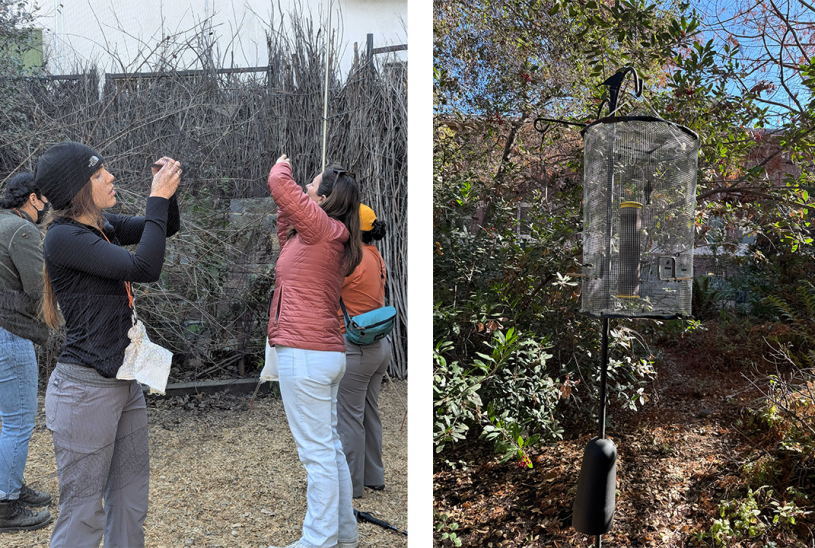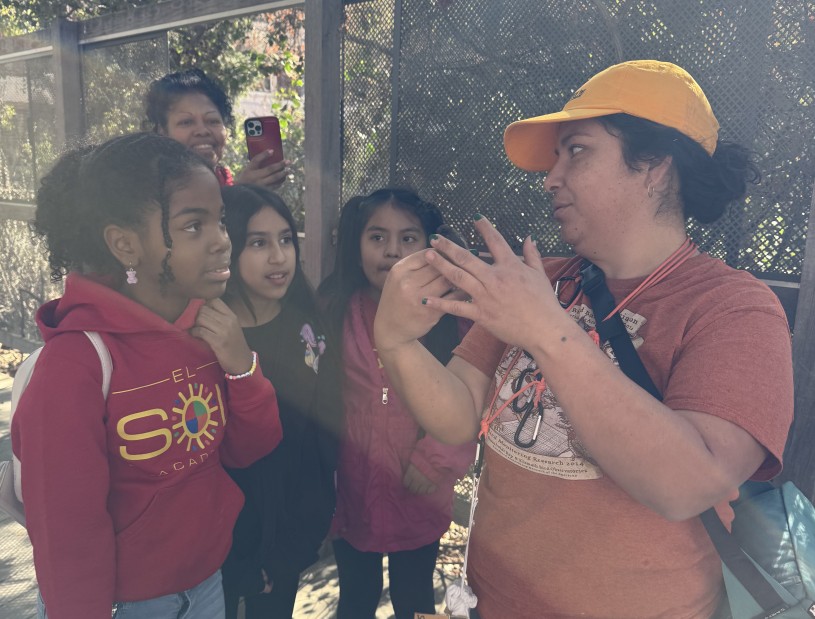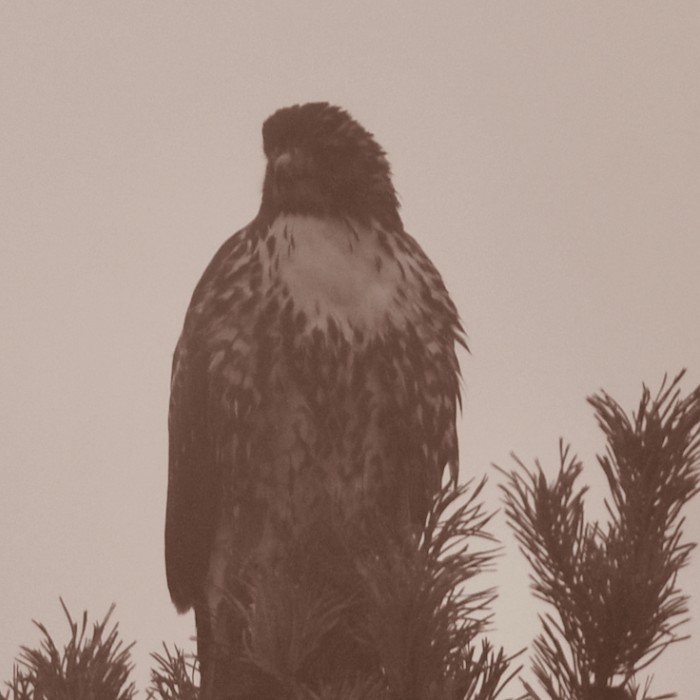Bird banding, Wildfire Smoke, and the Nature Gardens
Researchers band birds and collect feathers in the Nature Gardens to study the impacts of wildfire smoke on birds.
Published April 3, 2025
The January 2025 urban wildfires devastated communities in Los Angeles, darkening the sky with plumes of toxic smoke.
To understand the impact those fires had on birds, Ornithology Curator Dr. Allison Shultz and fellow NHM researchers first took to the Museum’s roof to test the effect the smoke had on feathers and then to the Nature Gardens for a month of bird banding.
“We know birds are particularly vulnerable to wildfire smoke—smoke particles get trapped in their feathers, for example—but there are so many questions about that vulnerability,“ says Shultz. “Researchers have been investigating some of those questions through the community science Project Phoenix, and this activation of the Nature Gardens will allow us to take a complementary approach to ask even more questions about the effects of wildfire smoke on birds.”

“To understand how to best protect birds, we need to know exactly what kinds of particles get trapped in feathers and how efficiently birds can remove those potentially dangerous particles,” says Shultz. To find answers, Shultz and her colleagues at NHM teamed up with local master bird bander Walter Takai and Bear Divide station manager Tania Romero to band birds once a week for a month following the fires. To see how particulates changed over time, the team also collected breast feathers from the birds before banding and releasing them.
Along with NHM’s Nature Gardens, the researchers banded birds at an existing Zuma Canyon station and constructed stations at homes in Thousand Oaks and near the California State University Los Angeles campus.

The mist nets and feeder traps attracted plenty of birds, along with interest from Museum visitors. Studying the extracted feathers and banded birds will hopefully inform future conservation efforts and help us better understand how birds are coping with wildfire smoke. These projects are important first steps to producing much-needed research, and for Romero, the work was also a touchstone for her history with the Museum.
"As a first-generation Chicana who was born and raised in Los Angeles, my interest in science was sparked by the Natural History Museum and California Science Center. I remember walking to these spaces for all-day activities with my mother and siblings on a weekend morning, “ says Romero. “Working in the Nature Gardens was a full circle moment for me, returning to a place that gave so much to me to inspire future conservation stewards, the same way I was inspired twenty years ago."
